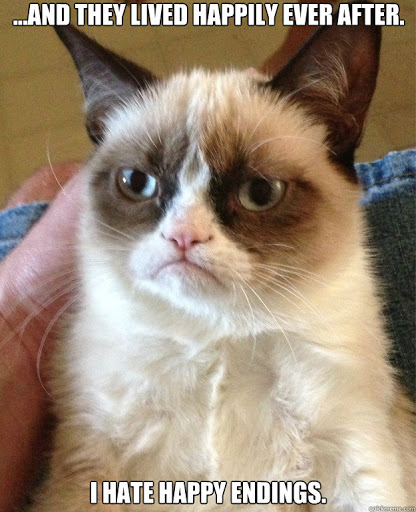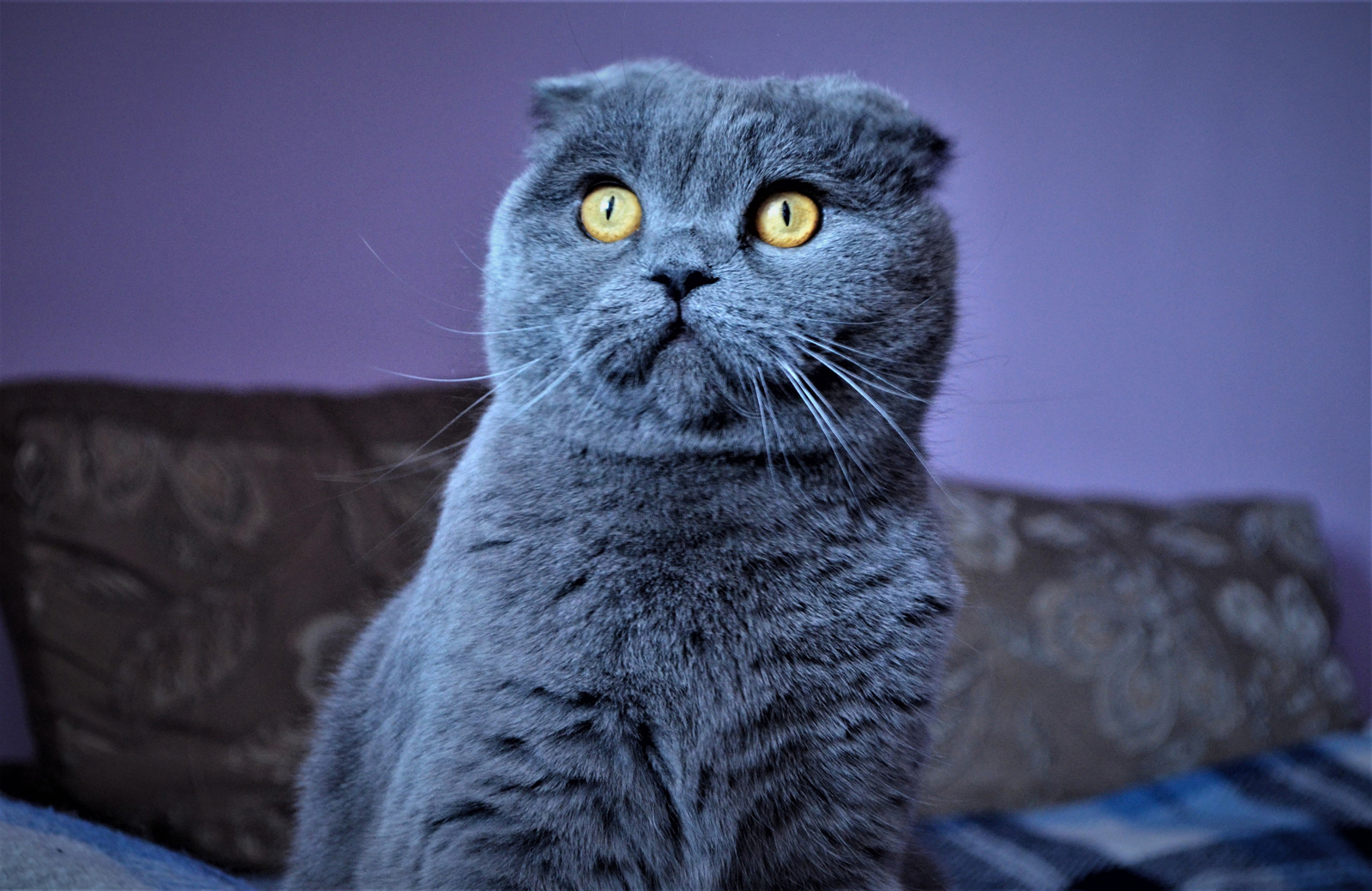Case studies and cat memes: who’s ever seen a cat wearing pants before?
Case studies and cat memes: who’s ever seen a cat wearing pants before?
Any who…
Let’s recap our conversation thus far.
Today’s consumers:

Brilliant use of a laptop by the way…
Today’s marketing:

Communication mismatch? Yes, times 1000%. He’s monologuing and she’s like, “Will I have enough time to grab some Pad Thai before my 2pm meeting?…Crap!…He’s still talking?…I’ve only looked at my watch literally 100 times since he started…”
“Wow, is it that obvious?”
Yes, this is exactly what a lot of companies do online…monologue at their clients using the largest (and loudest) megaphone they can find.
They become talking heads just spewing out more noise and distraction in an environment that’s already saturated (and drowning) is these very things.
What today’s marketing is doing to consumers:

Avoid this approach whenever possible.
“Yes, of course, but what do I do instead…?”
Ask the clients that already do business with you (and love you) to share their stories of how your company helped solve their problems and relieved much frustration, misery and pain.
Then, their stories attract other clients with similar problems that buy your products and services and live…
…happily, ever after. The end.
Unless…

…they’re incapable of happiness. (Avoid these grumps whenever and wherever you can.)
HOWEVER, for those clients you can make happy (and who can embrace happiness) these redemption type stories, “client X had a problem that we solved using our products, services and solutions,” has a name: case studies.
They’re brilliant, really. Most modern consumers spend money based on recommendations and testimonials from their family, friends and peer group.
Why? Because they trust them.
So, using real life client successes to tell the story of how your products, services and solutions solved their problems is like getting in the fast lane (the carshare one, of course) to the city of trustworthiness (and increased sales).
Sounds pretty great, right? So what’s a case study and how do I make one?
Typically, case studies are 1-2 PDFs that tells the story of how your company helped solve a client’s problem.
You then share it on your website, across your social media channels, in person, etc. There are many ways to present them. You do you.
But, if you want to write a successful case story, here are a few things to include:
-
Tell a before-and-after story.
What did their life look like before they used your products, services and solution? How does their life look after they did?
Make sure to capture all the good and make it easy to understand and find.
-
Use clear, concise language that your buyers will understand.
Avoid using jargon or rarely used big words (unless that’s your audience) and stick to everyday parlance (great word, eh?) Don’t make your clients look back at you like this:

(You’re absolutely right. There’s a s*** ton of cats featured in this post.)
-
Be the guide to your client, the hero, in the problem solving story.
This is a page straight out of the Storybrand Framework book. (Huge shout out to Donald Miller for his awesomeness.)
This means that your purpose as a brand is to serve your client in their role as the main protagonist in the problem-solving plot you’re partnering together in. (I prefer the comedic ending in case you didn’t notice).
Essentially, you’re Yoda to their Skywalker, Mr. Miyagi to their Danielson, Gandalf the Grey to their Frodo, ad infinitum.
Now that you know what a case study is and its basic shape and storyline, here are the must haves when crafting ones that not only dial in your trustworthiness but bring in the Benjamins.
The 5 Essential Things to Include in Your Case Study:
1. Name the Challenge
Lay out the challenge the company was facing.
- “Such and Such Company
- …was tired of [blank] and began to wonder if there was a better way.”
- … desired instead to…”
- …needed to be able to…
For example: Cat Nap & Nippers (CNN) was struggling to keep up with their increased catnip product demand and online sales explosion in response to the coronavirus. Their supply chain had been interrupted due to the lack of a robust IT infrastructure and support. They were also facing catnip thievery along their supply routes further decreasing their already dwindling supplies.
2. Explain the Solution
For best results, ask your customer to explain the solution in their own words.
For example: CNN uses the solutions from Doggy Dog Consultants (DDC) for a streamlined transition. “DDC really helped our firm work through the enhanced e-commerce need of our clients and built the IT infrastructure required to stabilize our catnip supply chain while also providing more cyber (and in person) security support to reduce thievery.”
3. Describe the Client’s Background
Your prospects will need to know about your customer’s background in order to better identify with their success using your solution.
Feature a short summary, 1-2 paragraphs, explaining your customer’s business. Be clear and concise.
For example: “Cat Nap & Nippers in Parklandia, California, is a cat nap and catnip product accessories health and wellness company that manages a huge community following dedicated to keeping cats healthy, happy and haughty. CNN has a long history of serving the greater animal kingdom for over 30 years.”
4. Get Impactful Client Quotes
Select 1-2 customer quotes that your prospects can connect with and relate to – remember this isn’t about you, the business owner, it’s about what you did as a guide alongside your client (the hero) on the problem-solving journey.
Focus on your client’s success and how your solution helped them achieve it.
For example: “Increasing our e-commerce bandwidth and functionality and smoothing out our supply chain has completely altered our business. We’ve increased sales 10-fold and during a pandemic! Our clients are happier, which makes us happier. Thank you DDC! We couldn’t have done it without you.”
5. Make Great Design that Gets Seen
It’s important to remember the purpose of case studies isn’t to just deliver information, like all those boring college research papers.
They are meant to also be meaningful, inspiring and hopefully, a little entertaining. (We could all use more spice in our lives.)
Take the time and spend the money to have your case studies professionally designed.
Remember design isn’t just about including a pretty picture or graph, it’s about how to arrange words (aka information) on a page to make it easy to take in, process and understand.
(You’d be amazing how much font type, size and placement alone can increase your chances of clients reading what you’re putting out there.)
In addition, invest in getting them professionally printed to mail to prospects (no, snail mail isn’t dead, it’s still a vital marketing tactic), to include in portfolios, and to hand out at trade shows and conferences.
Be sure to include a downloadable PDF version of your case studies on your website and to send via email during sales calls.
In the end, we’re an information hungry society that is, ironically, oversaturated with information.
So it’s important to be clear, concise and tell success from your client’s perspective to inspire real buyers to trust you enough to give you their money to solve their problems too.
Lastly, I’ll take a moment for a little self indulgence as I didn’t mention pants once this entire blog.
So, I’ll leave you with this image:

You’ll need to buckle up for this educational email. We’ll be tackling what to do with a bad review (and how to survive them) while remaining focused on getting the good kind.
Got Marketing Questions? We can help.
By clicking this button, you submit your information to Scott Growth Strategies, who may use it to communicate with you regarding this and other services.
